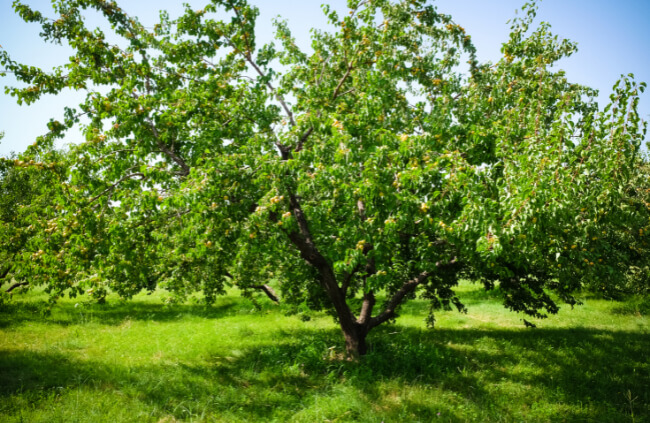There is no better summer fruit than the humble apricot, especially if it’s grown on your own tree. Supermarket apricots lack the intense flavour – to be honest, they lack any flavour – and more often than not they’re heavily bruised and under-ripe or very over-ripe.
Finding nice apricots from the grocery is a challenge too hard to comprehend. The only alternative then is to grow your own apricot tree but with fruit flies and marauding birds to contend with, is it really worth your while?
Of course it’s worthwhile? Growing any tree that produces fruit in your own home garden must be worthwhile.
More...
Introducing the Apricot Tree
Prunus armeniaca (the Armenian Plum) has been grown successfully for millenia yet today’s varieties are so much more robust and consistent compared to their predecessors.
They’re typically a cooler climate tree fruiting earlier than most other summer fruits but can also be grown just as well in sub-tropical climes.
How to Grow and Care for an Apricot Tree

The key to guaranteeing an abundant harvest from your apricot trees is all in the pruning. Sure, they need adequate sun exposure and a loamy rich soil that drains well. They also prefer an adequate supply of water and additions of compost around their drip line. But, the key really is pruning.
Like most drupe fruit – peaches, loquats, plums and nectarines – apricots blossom and produce on second year wood. Therefore, the last thing you want to be doing with your apricot tree is pruning them back hard.
In the dormant period they will only require a light pruning both to enable the branches to support the weight of the fruit, but also to keep its shape.
Pruning Apricot Trees
The most successful pruning shape for apricot trees is the “vase” configuration. It allows easy access for fruit picking, enables good air movement throughout the limbs and encourages strong leaders to grow ready for future year harvests.
The “fan” shape is also useful for those with smaller yards but it will limit the amount of fruit you produce and does make the tree weaker if your area is prone to strong winds. For gardeners with really small yards, apricot trees lend themselves very well to being espaliered.
Once the fruit has set, it may pay to fertilise again to help the tree sustain itself. You may also want to check the loading of fruit and cut some off, or support the tree, if the amount of fruit being produced appears to overburden the tree.
While it may seem that you’re losing fruit this way the effects of not being lenient on your tree could produce irreversible damage to limbs and even the supporting trunk.
Most apricot varieties fruit early, that is within the first week or two of summer while others don’t blossom until late spring and produce their harvests well into the summer period. Those that produce early are usually less likely to suffer from fruit fly infestations, while late-harvest varieties typically produce sweeter fruit.
Published on June 5, 2023 by AGT
Last Updated on February 9, 2024




